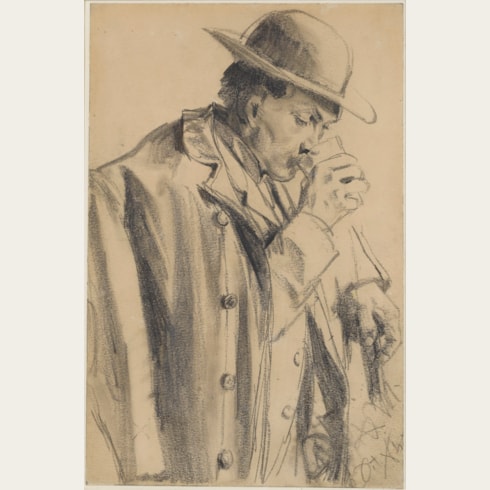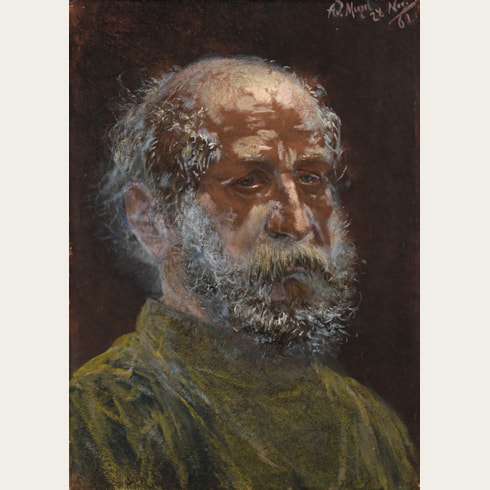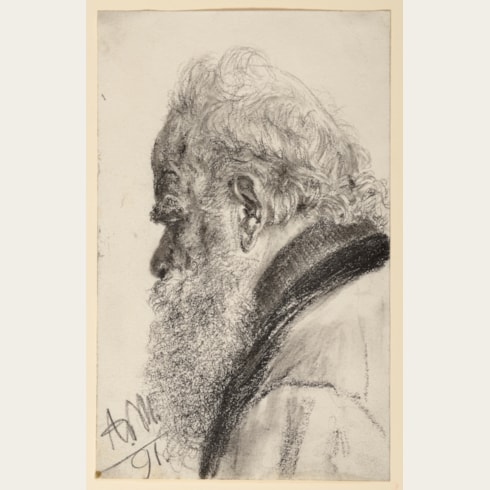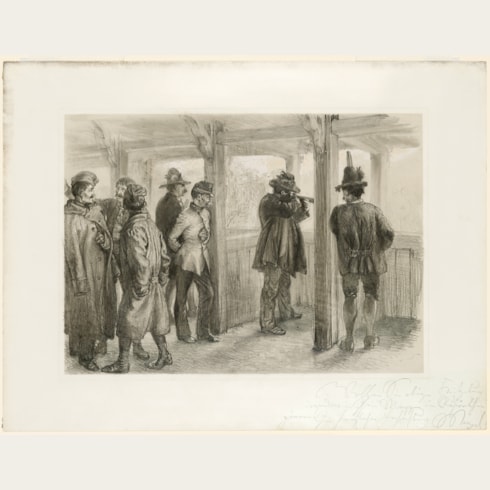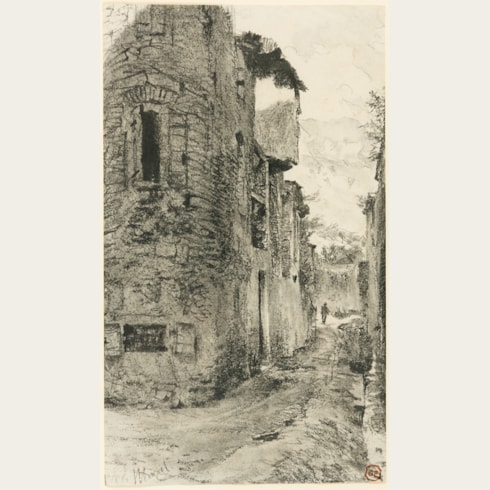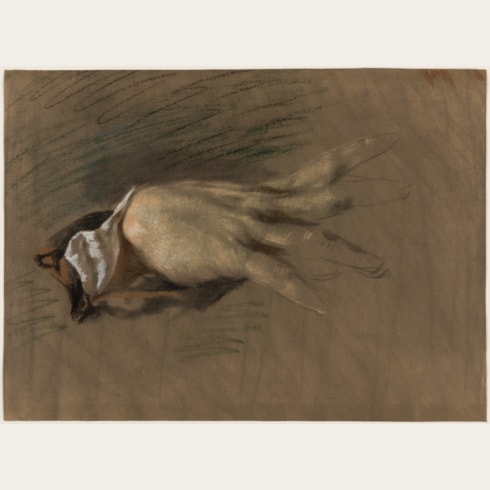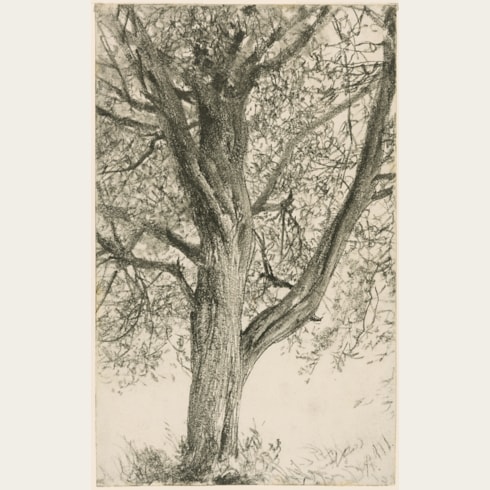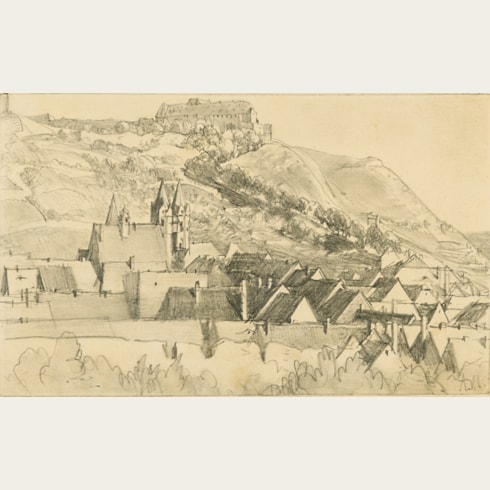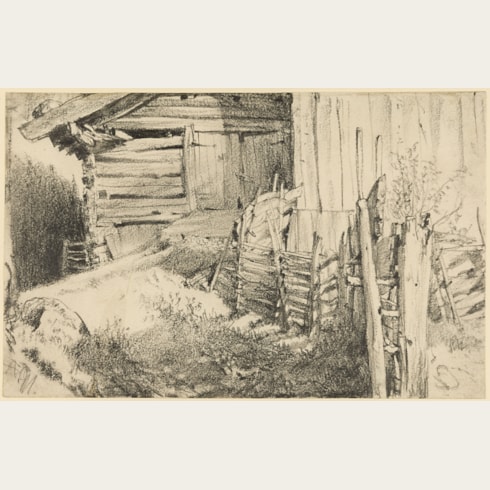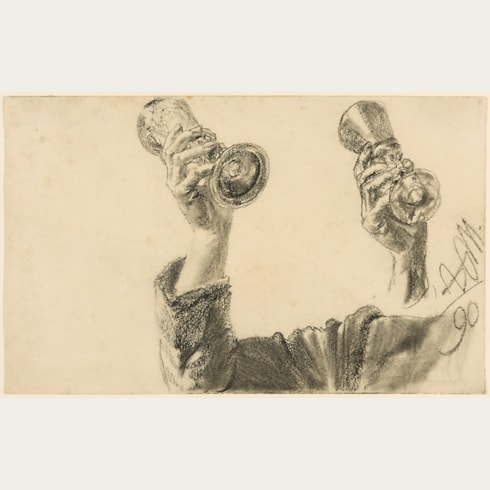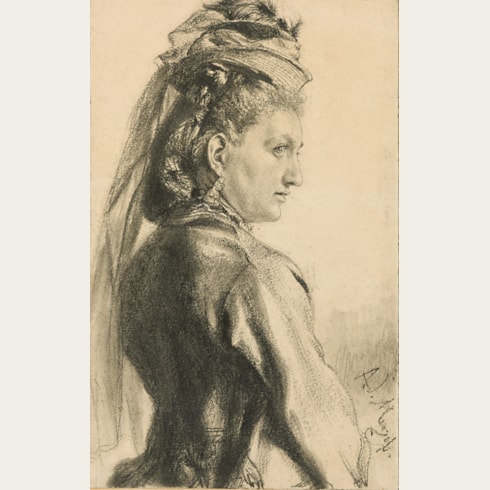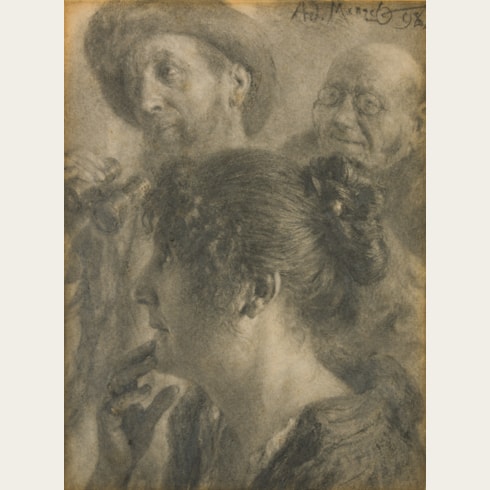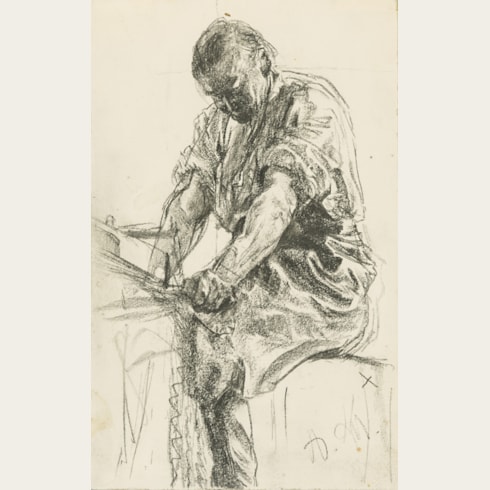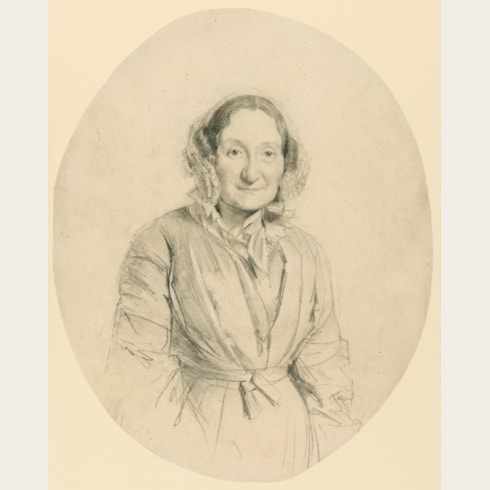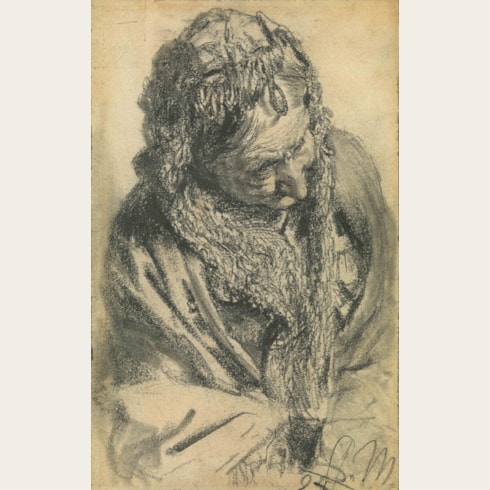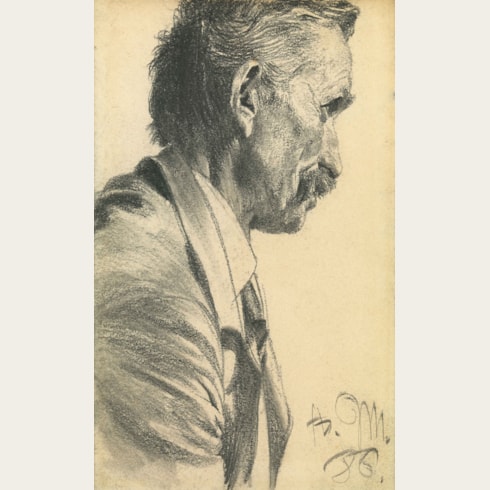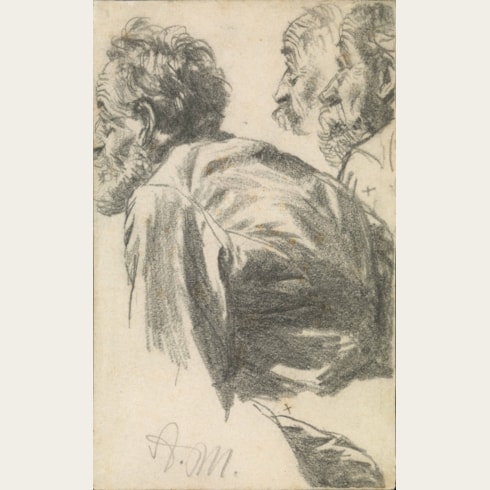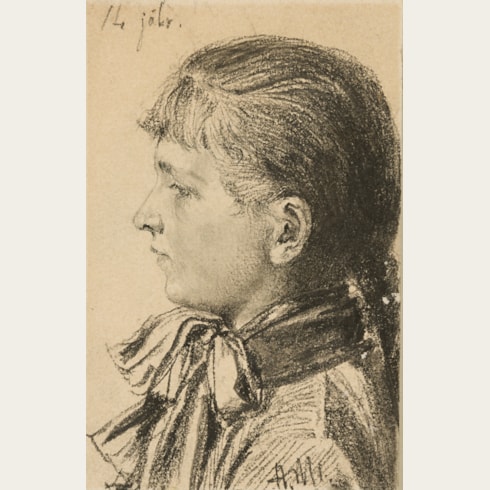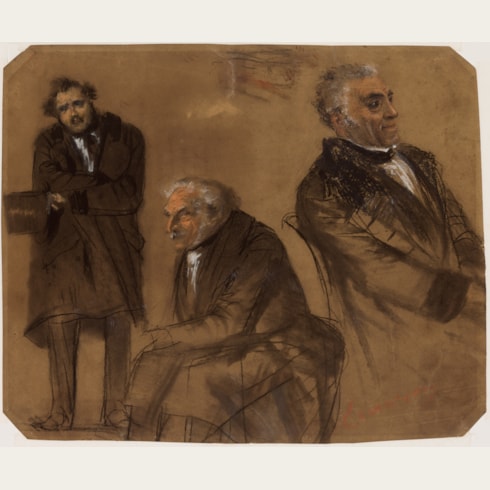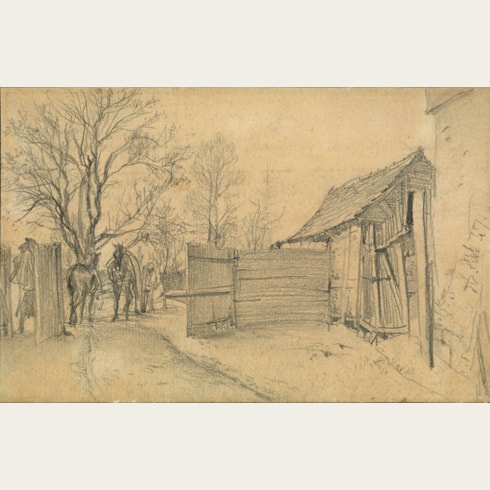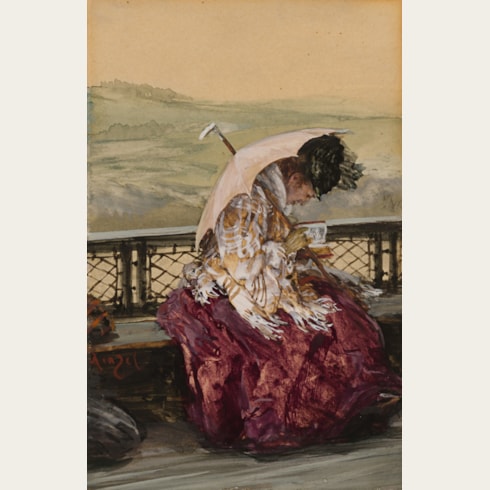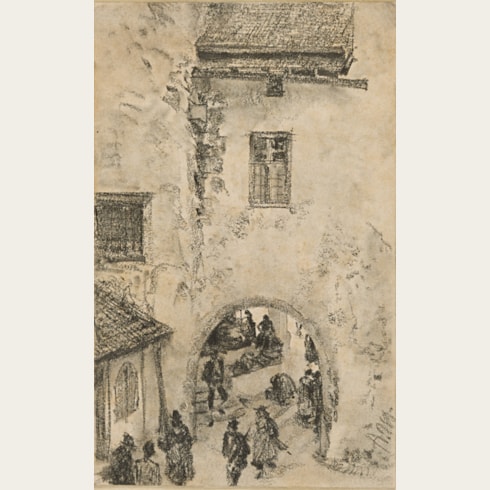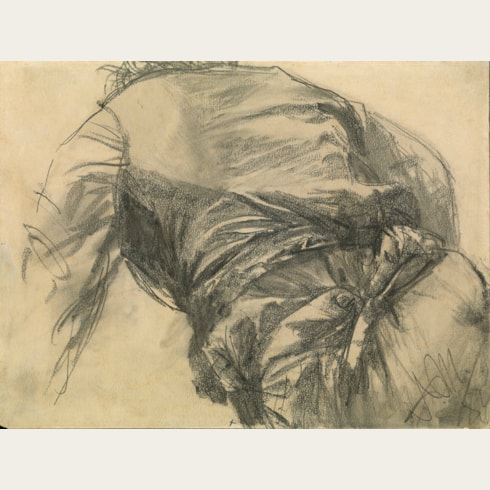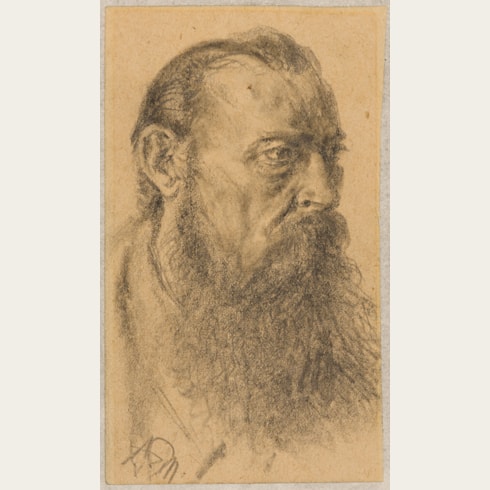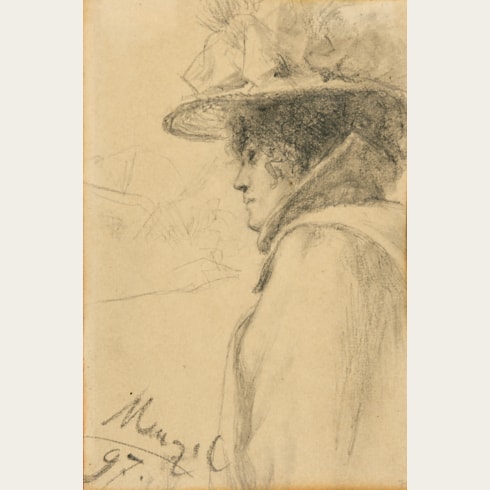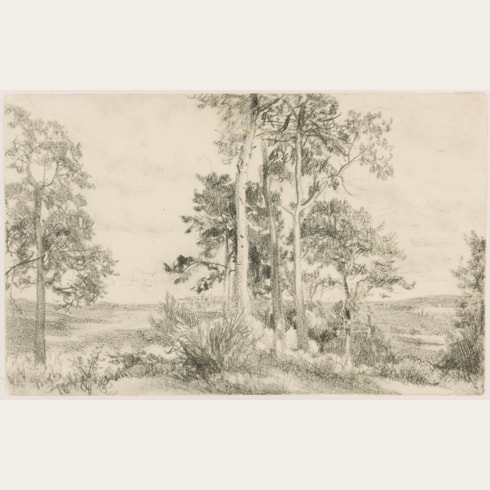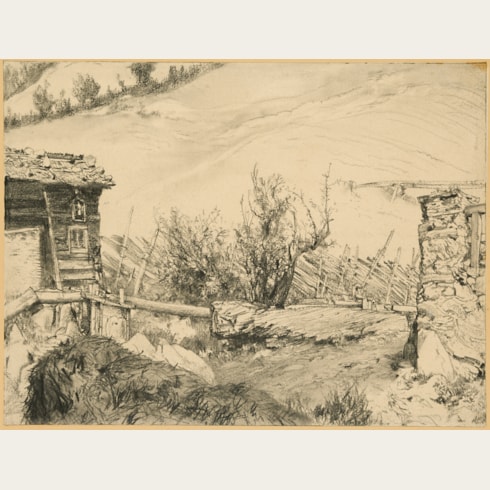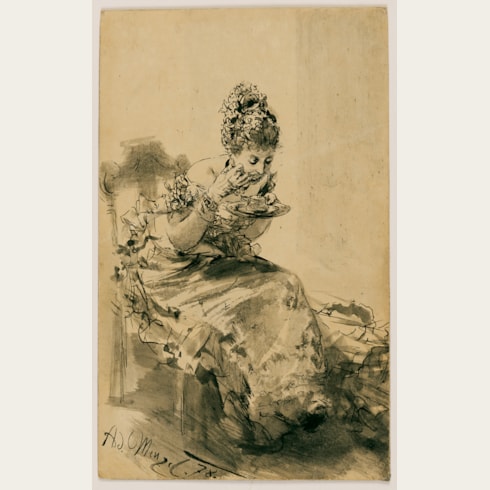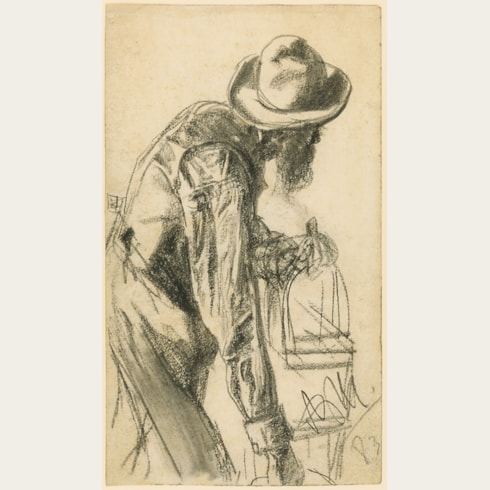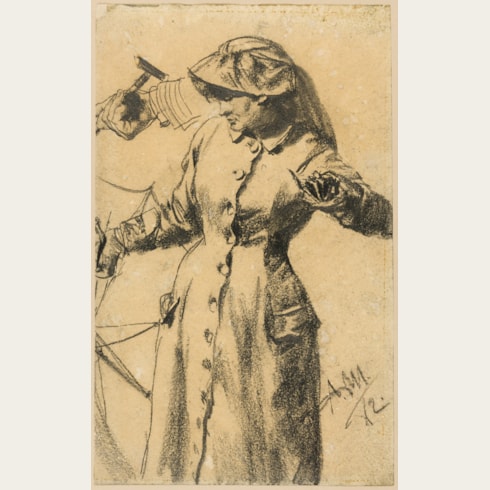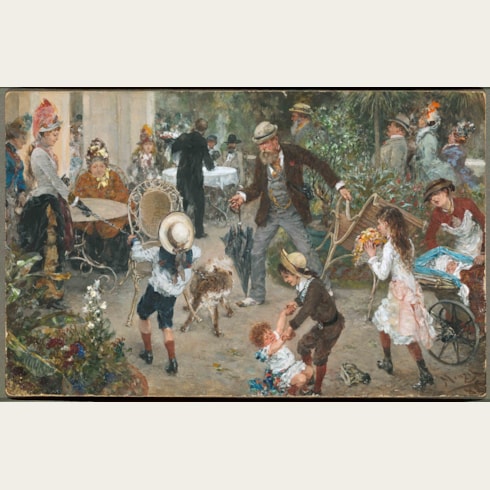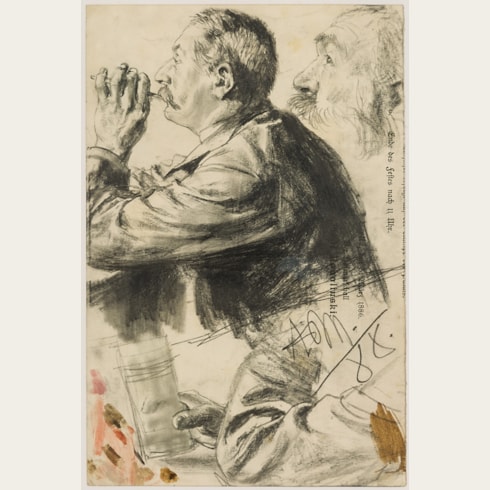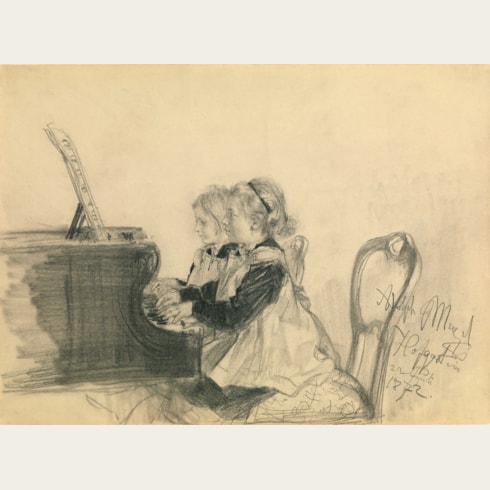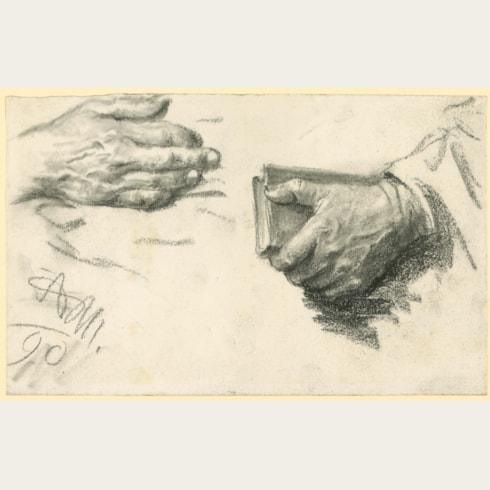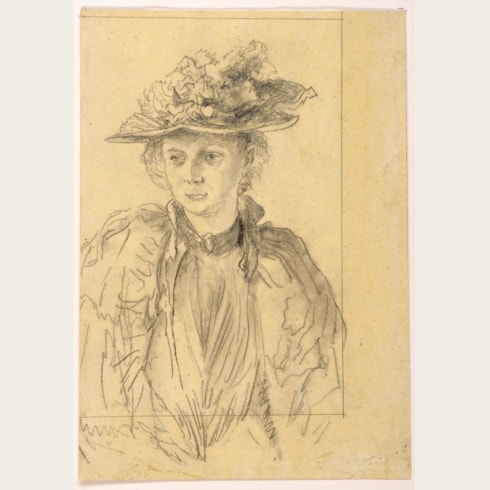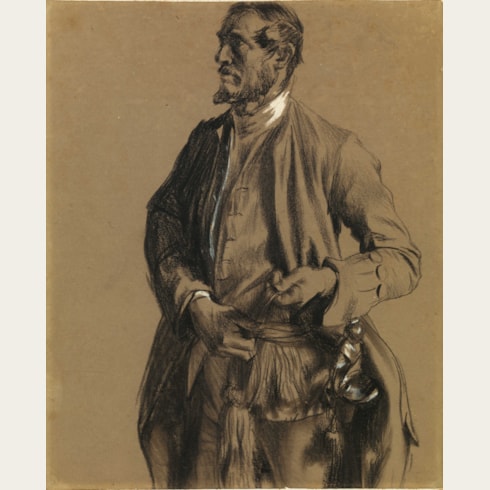Adolph MENZEL
(Breslau 1815 - Berlin 1905)
A Bearded Man Looking Down and to the Right
Signed with initials and dated A. M./ 92 at the upper right.
208 x 130 mm. (8 1/8 x 5 1/8 in.)
The present sheet displays Menzel’s particular mastery, while drawing in monochrome, of the use of a combination of a soft carpenter’s pencil with stumping to create remarkable tonal effects. The soft greys of the model’s face, hair and coat, drawn with the stumped pencil, provide a contrast with the more precise strokes of the pencil seen in the beard. Like several of Menzel’s late head studies, the model here is depicted from a slightly unusual angle, while the image fills the page, constrained only by the edges of the sheet.
Drawn on a relatively small scale, these intimate late ‘portrait’ studies were much admired in Menzel’s own lifetime. As one contemporary writer noted of the artist in 1902, ‘The best legacy among his later works are these drawings…His dominating skill is to take the great drama of gesture and facial expression by surprise and to render it in all the force of vitality.’
Adolph Friedrich Erdmann von Menzel began his career working in his father’s lithography shop in Breslau (now Wroclaw in Poland) and later in Berlin, where his family moved in 1830. A brief period of study at the Akademie der Künste in Berlin in 1833 seems to have been the sum total of his formal training, and he is thought to have taught himself how to paint. At the outset of his career he worked as an illustrator, his activity in this field perhaps best exemplified by a series of some four hundred designs for wood engravings produced to accompany Franz Kugler’s History of Frederick the Great, published in instalments between 1840 and 1842. During the late 1840’s and 1850’s he was occupied mainly with a cycle of history paintings illustrating the life of Frederick the Great.
In 1861 Menzel received his most important official commission, a painting of The Coronation of King William I at Königsberg, on which he worked for four years. In the following decade, his lifelong interest in scenes of contemporary life culminated in what is arguably his masterpiece as a painter; the large canvas of The Iron Rolling Mill, painted between 1872 and 1875 and immediately purchased by the National-Galerie in Berlin. The last three decades of his career saw Menzel firmly established as one of the leading artists in Germany, a prominent figure in Prussian society and the recipient of numerous honours including, in 1898, elevation to the nobility. In the late 1880’s he began to abandon painting in oils in favour of gouaches, although old age meant that these in turn were given up around the turn of the century. Yet he never stopped drawing in pencil and chalk, able always to find expression for his keen powers of observation. A retrospective exhibition of Menzel’s work, held at the National-Galerie in Berlin a few weeks after the artist’s death in 1905, included more than 6,400 drawings and almost 300 watercolours, together with 129 paintings and 250 prints.
A passionate and supremely gifted draughtsman, Menzel was equally adept at watercolour, pastel, gouache and chalk. He was also able to draw with either hand, although he seems to have favoured his left. An immensely prolific artist (over four thousand drawings by him, together with 77 sketchbooks, are in the collection of the Nationalgalerie in Berlin alone), it is said that Menzel was never without a sketchbook or two in his pocket. His friend Paul Meyerheim described the artist’s appearance: ‘In his overcoat he had eight pockets, which were partially filled with sketchbooks, and he could not comprehend that there are artists who make the smallest outings without having a sketchbook in their pocket…an especially large pocket was installed…to hold a leather case, which held a pad, a coupe of shading stumps and a gum eraser.’ Menzel was widely admired as a draughtsman by his contemporaries, both in Germany and abroad, and Edgar Degas, for one, is known to have owned at least one drawing by him.
Provenance
Anonymous sale, New York, Bonham’s, 26 January 2007, lot 45
Jill Newhouse, New York
Private collection.





